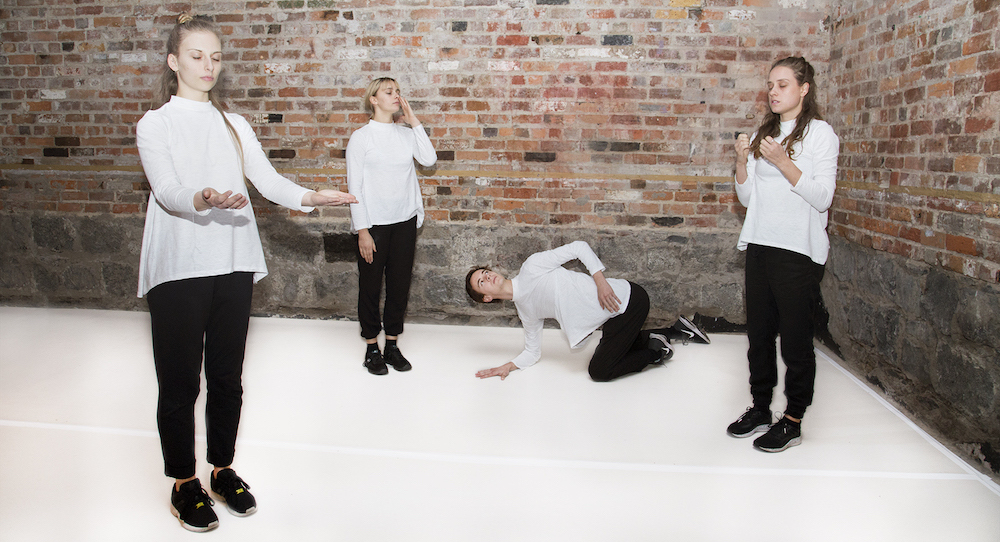Owl and Cat Theatre, Melbourne.
20 June 2017.
Referring as it does to specific instances of subjective conscious experience, the philosophical term “qualia” is entirely appropriate both for the work itself and, by extension, for this subjective appraisal of it.

Caitlin Dear’s ‘Qualia’. Photo by Paul Sutherland.
For it goes without saying that idiosyncratic sensory experience sits deep in the heart of all performance (and spectating), and it is also true that artists have increasingly been teasing this notion apart in the modern and post-modern eras. In terms of whether this makes for a satisfying night out at the theatre, as opposed to a mere indulgence in “meta” posing, the results are as mixed as, well, individual subjective perception. All of which could be said to lead us nowhere and tell us nothing.
Then again, Caitlin Dear’s meditative four hander Qualia is almost certainly not trying to be directive. Indeed, the work comes off more like installation than straight up dance. With its blend of slow movement, wafting electronica and, by turns, sensory deprivation and stimulation, it briefly extracts us from the noise and bustle of the everyday and lodges us in a space and time that is at once ethereal and physically immediate.

Caitlin Dear’s ‘Qualia’. Photo by Paul Sutherland.
Perhaps this could only ever be effective in a loungeroom-sized space like Richmond’s Owl and Cat Theatre, where Qualia admits only eight patrons. This lends a note of voyeurism to the proceedings, as we watch four young dancers investigate the rough-hewn, brightly lit rectangle, each orbiting around the room and one another, hands often extended, feeling for the edges and textures of perceived reality, as though mapping out new terrain with each gesture.
That we are blindfolded for a portion of the work, given lollies to suck, stimulated by strong citric aromas and fanned by cool air is clearly part of Dear’s investigation of the senses, the specificity of experience and the innate subjectivity of our human condition.

Caitlin Dear’s ‘Qualia’. Photo by Paul Sutherland.
It is probably fair to suggest, however, that Qualia is neither virtuosic nor especially heavy on spectacle. Although a level of precision and thought is evident, the production aspects are minimal, and the audience experience is more “gallery” than theatre. Indeed, the lack of a clearly central visual or narrative focus leaves us free to let our eye (and other senses) wander; much like the dancers do, feeling our way around a world we can never truly know.
Taking as read the inherent subjectivity of this opinion, Qualia is obviously the work of a serious and committed artist who, in this iteration, uses dance to channel our attention toward reflections which are at once banal and profound. That the commonplace and abundantly apparent should also be deeply mysterious – and its contemplation richly evocative – is what gives this work its almost haunting, trance-like tone and makes for a quietly teasing and pleasing subjective artistic experience.
By Paul Ransom of Dance Informa.

















